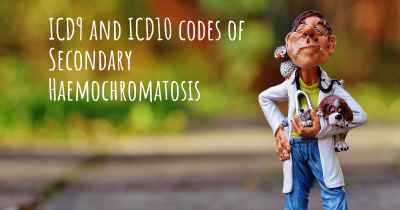Secondary Haemochromatosis prognosis
What is the prognosis if you have Secondary Haemochromatosis? Quality of life, limitations and expectatios of someone with Secondary Haemochromatosis.

Secondary haemochromatosis is a condition characterized by excessive iron accumulation in the body, resulting from another underlying medical condition or external factors such as repeated blood transfusions. Unlike primary haemochromatosis, which is a hereditary disorder, secondary haemochromatosis is acquired. The prognosis of secondary haemochromatosis depends on various factors, including the underlying cause, the extent of iron overload, and the promptness of diagnosis and treatment.
Identifying and treating the underlying cause of secondary haemochromatosis is crucial in determining the prognosis. If the underlying condition is effectively managed or resolved, the prognosis for secondary haemochromatosis can be improved. However, if the underlying cause persists or progresses, it may lead to continued iron accumulation and potential complications.
Early detection and intervention play a vital role in managing secondary haemochromatosis. Regular monitoring of iron levels, liver function, and other relevant markers can help in identifying iron overload at an early stage. Treatment options for secondary haemochromatosis primarily involve phlebotomy (removal of blood) or chelation therapy (use of medications to remove excess iron). These interventions aim to reduce iron levels and prevent further organ damage.
The prognosis of secondary haemochromatosis can vary depending on the extent of iron overload and the presence of complications. If left untreated or undiagnosed for an extended period, secondary haemochromatosis can lead to serious complications such as liver cirrhosis, heart disease, diabetes, and joint damage. However, with appropriate management and timely treatment, the prognosis can be significantly improved, and the risk of complications can be minimized.
It is important for individuals with secondary haemochromatosis to work closely with their healthcare providers to develop a comprehensive treatment plan. Regular monitoring, adherence to treatment protocols, and lifestyle modifications such as a healthy diet and avoidance of alcohol are essential for managing the condition and improving the prognosis.








